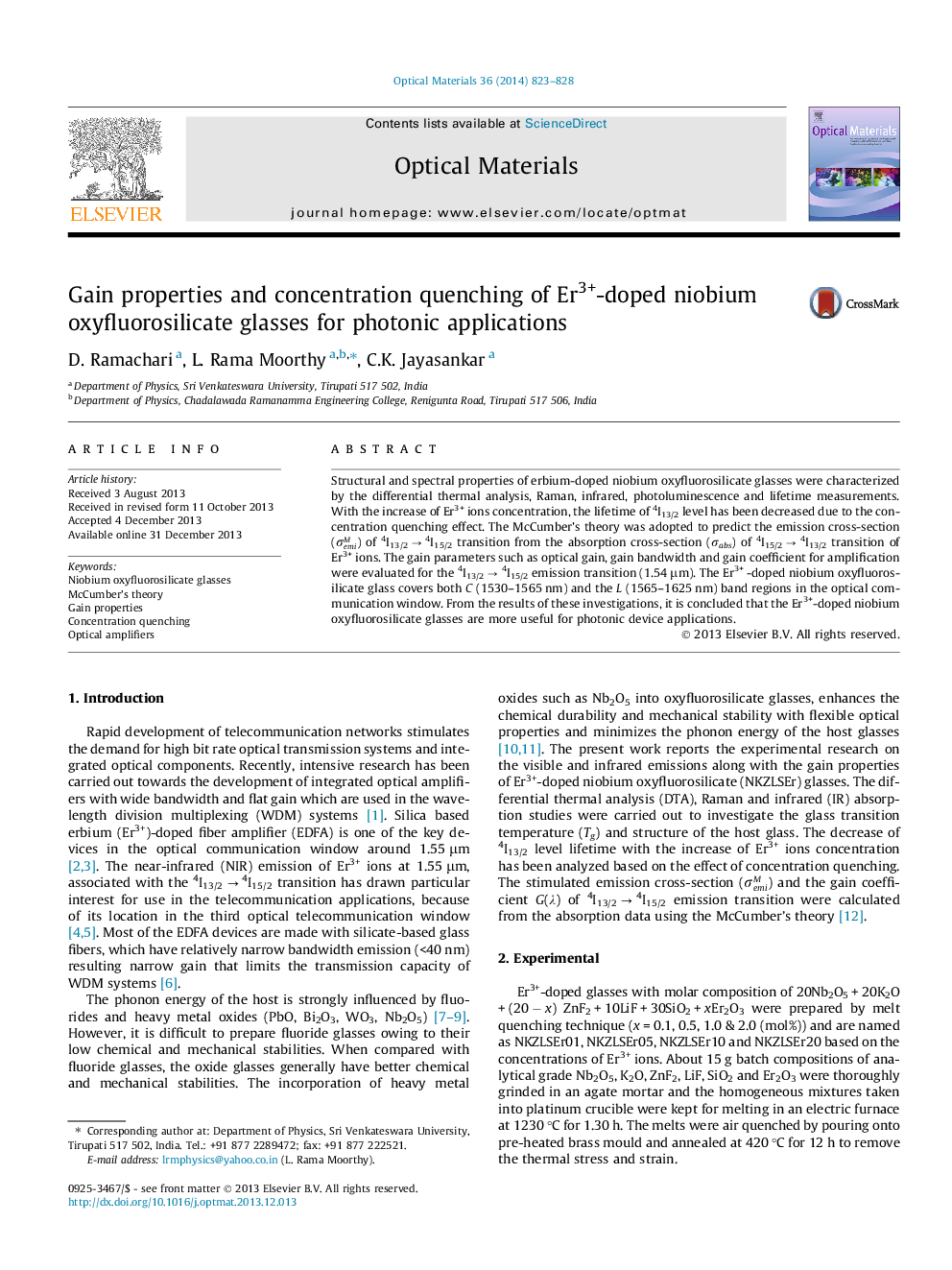| Article ID | Journal | Published Year | Pages | File Type |
|---|---|---|---|---|
| 1494308 | Optical Materials | 2014 | 6 Pages |
•The thermal stability of the NKZLS glass is determined to be 166 °C.•Raman and infrared data revealed vibrational modes of NKZLSEr10 glass.•Emission cross-section (7.46 × 10−21 cm2) was estimated using McCumber’s theory.•Larger gain bandwidth (694 × 10−28 cm3) and gain coefficient (2.58 cm−1) are obtained.•Flat gain (1440–1620 nm) has been obtained for broadband amplification.
Structural and spectral properties of erbium-doped niobium oxyfluorosilicate glasses were characterized by the differential thermal analysis, Raman, infrared, photoluminescence and lifetime measurements. With the increase of Er3+ ions concentration, the lifetime of 4I13/2 level has been decreased due to the concentration quenching effect. The McCumber’s theory was adopted to predict the emission cross-section (σemiM) of 4I13/2 → 4I15/2 transition from the absorption cross-section (σabs) of 4I15/2 → 4I13/2 transition of Er3+ ions. The gain parameters such as optical gain, gain bandwidth and gain coefficient for amplification were evaluated for the 4I13/2 → 4I15/2 emission transition (1.54 μm). The Er3+ -doped niobium oxyfluorosilicate glass covers both C (1530–1565 nm) and the L (1565–1625 nm) band regions in the optical communication window. From the results of these investigations, it is concluded that the Er3+-doped niobium oxyfluorosilicate glasses are more useful for photonic device applications.
Graphical abstractFrom the figure, the evaluated absorption (σabs ) and emission (σemiM McCumber’s theory) cross-section are found to be 5.92 × 10−21 cm2 and 6.97 × 10−21 cm2, respectively for 4I15/2 ↔ 4I13/2 transitions. The insert figure shows flat gain of the NKZLSEr10 glass in the 1440–1620 nm region and its gain coefficient of 2.58 cm−1 at population inversion of β = 1.0. From these results, the NKZLSEr10 glass is an excellent material for improving the broadband amplification in the C (1530–1565 nm) and L (1565–1625) bands of the 4I13/2 → 4I15/2 transition of the Er3+ ions.Figure optionsDownload full-size imageDownload high-quality image (181 K)Download as PowerPoint slide
